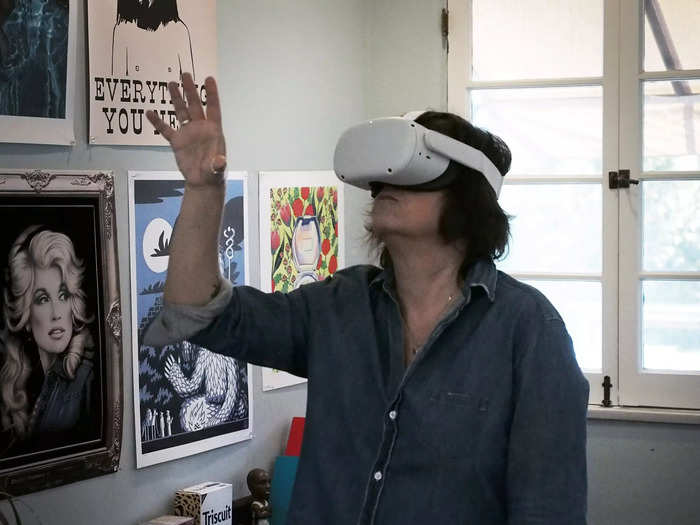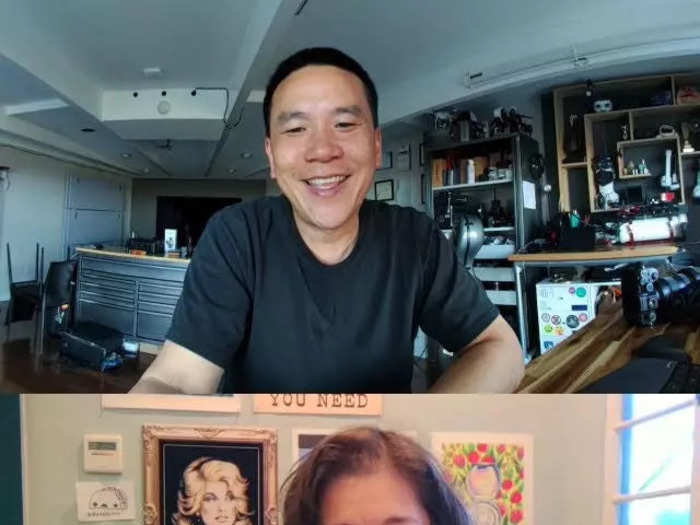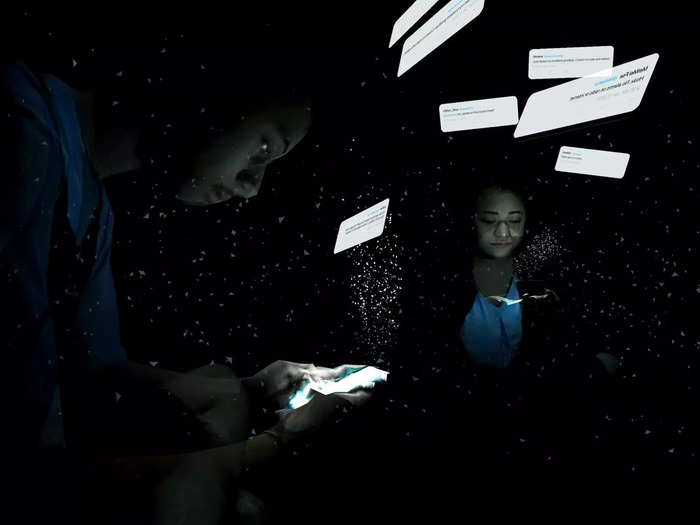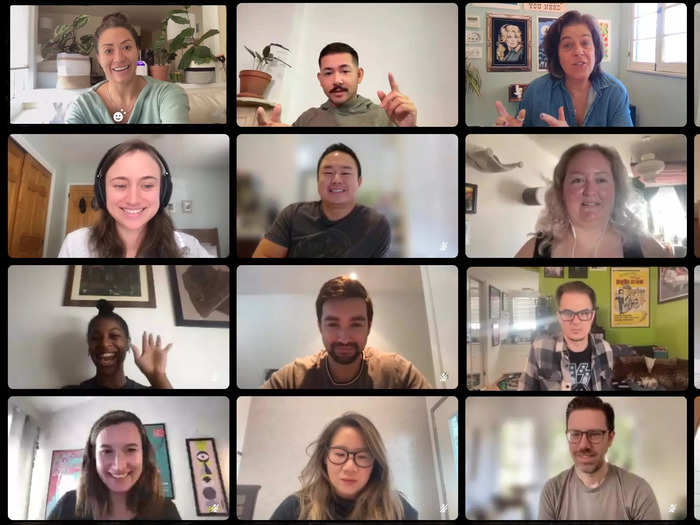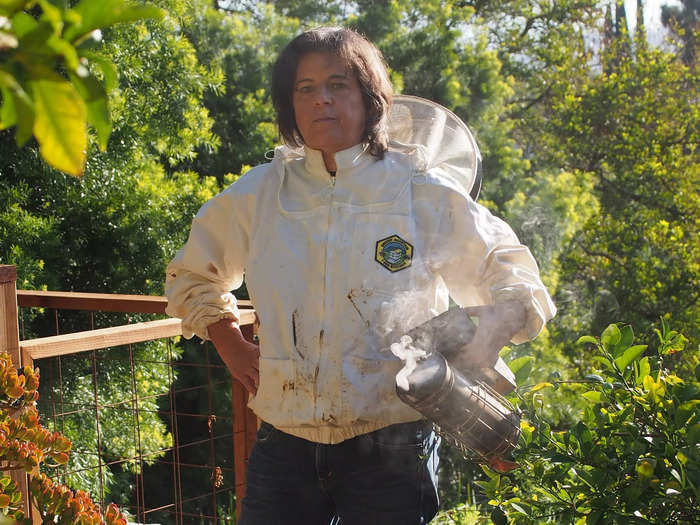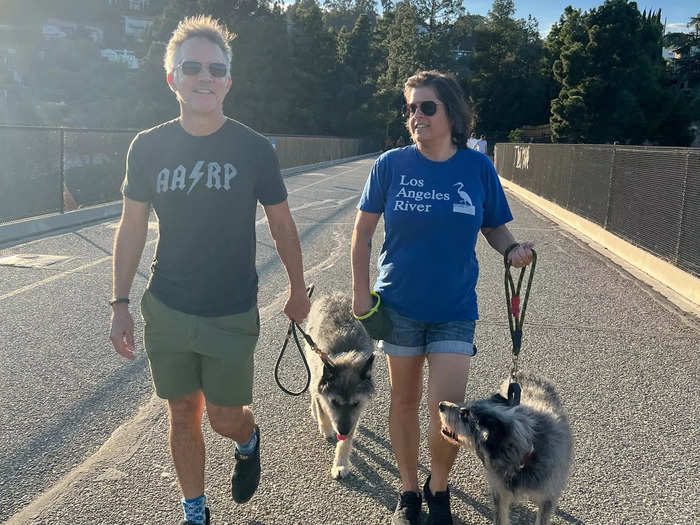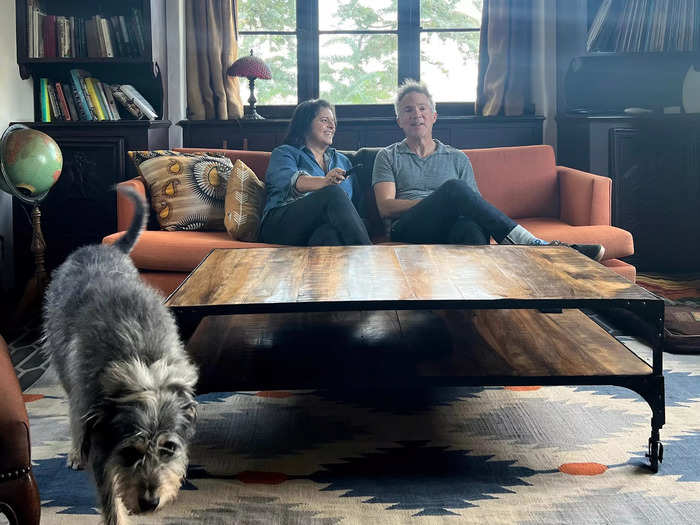Amy Seidenwurm, the executive producer of VR for Good at Meta, spends her time between the virtual world and the real world.Amy Seidenwurm
- Amy Seidenwurm works in virtual reality at Meta. She creates content on issues like trans rights.
- When she's not working in a VR headset or the computer, she beekeeps or gardens.
At the social media and tech giant Meta, there's a group of engineers, researchers, and executives working to write the future of virtual reality. One of those people is Amy Seidenwurm.
She's the executive producer of VR for Good at Meta, the company's branch that seeks to ensure VR is used not only for entertainment and work but also to raise awareness on social causes like trans rights and racial justice.
"We're telling stories to help people understand what somebody else's reality is in life to inform them or change their mind about a cause or get them involved," Seidenwurm, 55, told Insider. "This technology is really, really useful for creating empathy and putting yourself in somebody else's shoes."
A former record label owner turned VR producer, Seidenwurm joined Meta six years ago after she made a VR version of a Los Angeles Philharmonic show to share the experience with people from low-income backgrounds. She fell in love with the process of creating content for augmented reality and realized how the technology could be used to tell important stories.
The Meta exec, who is in charge of telling VR stories centered on human rights and social justice, lives in Los Angeles with her husband. Seidenwurm shared with Insider how she spends a typical day and ensures she doesn't get lost in the metaverse and how she grounds herself in reality with beekeeping and crossword puzzles.
Seidenwurm's workday is filled with hours in the virtual world via headsets, Zoom meetings with her team, and project-planning.
Virtual reality is all-consuming. She has to give 100% of her attention to the film when working.
Russell Bates
Each day, Seidenwurm spends three to four hours immersed in virtual reality. She watches projects repeatedly until every detail looks and sounds the way she likes.
The content can be intense and moving. One recent project she helped launch was called "Kill Your Masters," which profiled community activists leading the racial-justice movement in the US.
"I'm really lucky to be in a position to help change minds or spur action around issues I'm passionate about," she said. "I only wish I could work on all of the great pitches that are shared with us."
For her, the best part of working in a headset for hours is also the worst thing: You can't collaborate with anyone in real time. Your entire attention is devoted to the content, she said.
"It's great for focus and empathy. It's terrible when you need to respond to your coworkers," she said.
She works with producers around the world, so she spends hours on Zoom, mostly working from home.
Eric Cheng
Seidenwurm works with several producers who are located across the US, Europe, and Africa. She typically has six to seven video meetings a day.
"There is a small and committed community around narrative VR that feels like the future of media to me," she said. "It's diverse and progressive and welcoming, which makes me very proud to be a part of it."
Seidenwurm is a member of Meta's Immersive Product Council, a group that reviews VR, augmented reality, and the metaverse to ensure products made in these areas are ethical, accessible, diverse, and inclusive. As part of this council, she might weigh in on a new game Meta is producing.
Seidenwurm's prior projects include VR experiences raising awareness on mental illness and human trafficking.
Seidenwurm helps turn emotional films into virtual-reality experiences.
Archer’s Mark
Recently, the Meta producer helped create "On the Morning You Wake," a virtual-reality documentary that explores the imminent threat of nuclear weapons. The experience follows several people who have to make key decisions minutes before a nuclear attack.
"I feel like I'm making a difference when I see user reviews that say that an experience has really moved them or made them feel seen, and that makes everything worth it," she said.
Having monthly happy hours with her team is an important way for Seidenwurm to feel connected.
Erika Barraza
Every few weeks, Seidenwurm and her colleagues will have a virtual happy hour where they'll enjoy a drink and snacks and chat about their lives outside work.
Before signing off, she writes down a to-do list for the next day. "It's probably pretty common, but writing down my tasks for tomorrow really helps me put an end to the day when I'm working at home," she said.
Seidenwurm makes sure she spends plenty of time outside screens and headsets too, starting with her unique hobby: beekeeping.
It's important to escape virtual reality and reconnect with the real world. That's where the bees come in.
Russell Bates
In her free time, the Meta VR producer beekeeps in her backyard. For Seidenwurm, beekeeping is both a small way to give back to the environment and a fun way to make sure she gets outdoors. She's been entertaining the eco-friendly hobby since 2008 when a neighbor who kept bees introduced her to it.
"Bees are a really good thing to look at when you need a break from the screen," she said. "To watch them buzzing around, it's fascinating."
In the spring, her colonies have up to 10,000 bees.
"The bees are great," she said. "They need very little care and are important pollinators in our world. They also are very entertaining to watch and are far less scary than you think."
Seidenwurm harvests the bees' honey and gives it to friends and family.
Creative Touch Imaging Ltd./NurPhoto via Getty Images
"My husband and I harvest our honey under a label we call Feral Honey and share it with friends, which is a lot of fun," Seidenwurm said.
The Meta producer has helped teach several people how to care for bees in urban environments. She said she felt proud that she'd helped foster the movement to beekeep in urban environments.
The VR producer also gardens every day to reconnect with the physical world.
Amy Seidenwurm
In her free time during weekday afternoons, Seidenwurm steps outside to her garden where she inspects the tomatoes, squash, and herbs like thyme and basil.
"I've always been into tech and also more tactile, tangible stuff," she said. "I've always had a passion for music and art, and think that technology can be harmonious with nature and other low-fi pursuits."
Every day, Seidenwurm also prints out the New Yorker crossword puzzle and completes it in about 30 to 45 minutes. That's in addition to the New York Times crossword puzzle, which she says she breezes through every day, too.
Seidenwurm makes sure to get some quality time with her husband and their two dogs.
Natalie Suarez
After work, Seidenwurm, her husband, and their two dogs go on a hike around their neighborhood for an hour or so.
The pair enjoy dinner together. That usually means some type of home-cooked meal like seared scallops, halibut with blistered tomatoes, or shrimp tacos.
Every few weeks, Seidenwurm and her friends will have a pizza night and play dominoes.
She then winds down for the evening, though she often doesn't fall asleep until 1 a.m.
Natalie Suarez
Most nights, Seidenwurm and her husband watch TV for a few hours. Right now, they are making their way through "The Patient," an eerie Hulu series about a patient holding his therapist hostage, starring Steve Carell.
"I don't like scary things in general, but 'The Patient' makes me uncomfortable without making me scared," she said.
Seidenwurm's bedtime is about 10 p.m., but she often doesn't fall asleep until about 1 a.m. "I'm an insomniac — a really bad insomniac. So I will often then read a book for five hours after getting in bed," she said. She just finished "Sea of Tranquility," a novel by Emily St. John Mandel.
"I'm a chronic sleep-deprived person. The only good thing about that is that I am a superhero when it comes to jet lag because I'm used to feeling shitty from not sleeping," she said, laughing.

